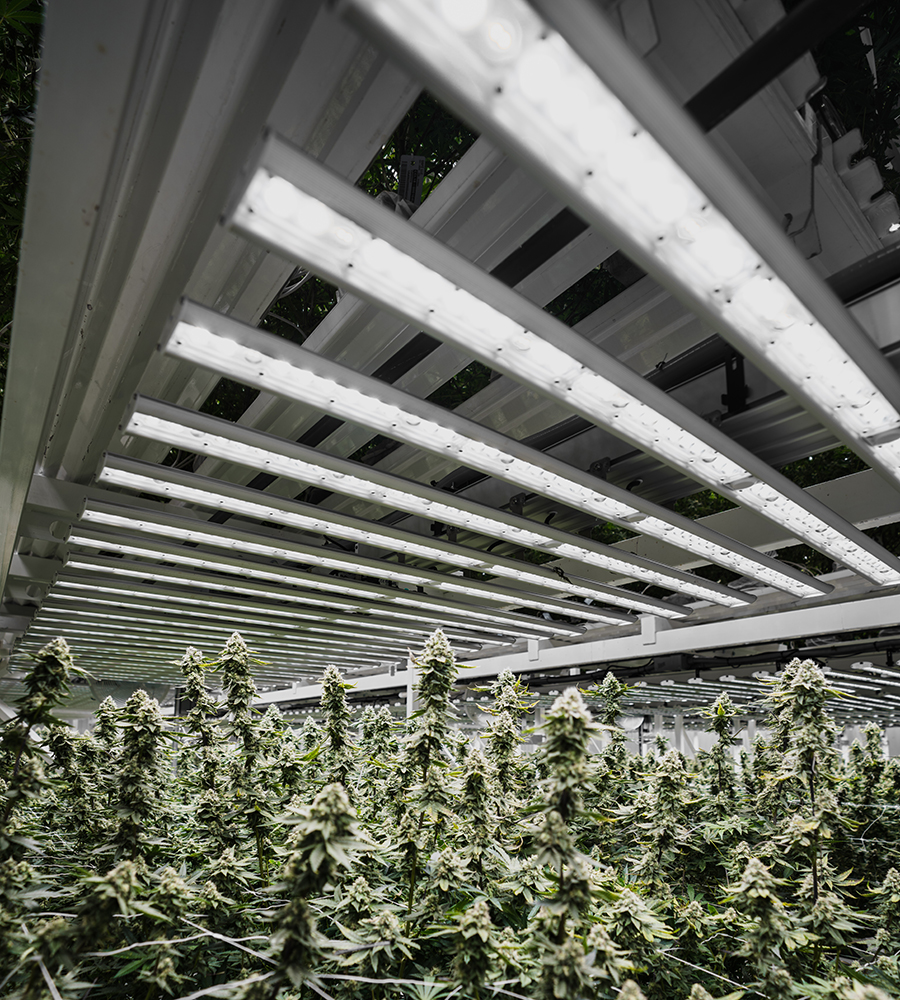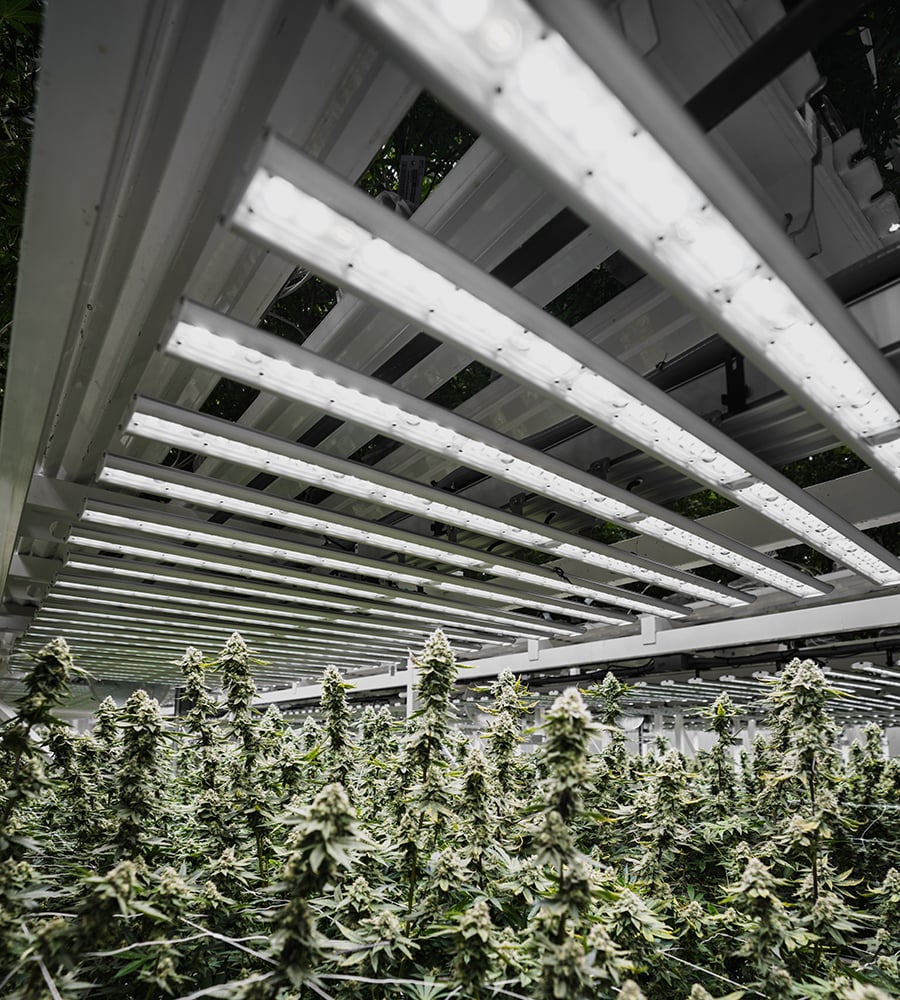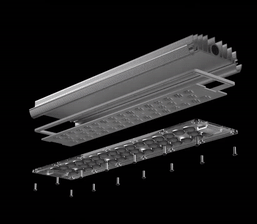
Heat Transfer In LED Lighting: What You Need To Know

Due to the reduced amount of energy they consume in comparison to traditional lighting solutions, LEDs are an environmentally-friendly and economical lighting choice. In general, there are three types of heat transfer; conductive, convective, and radiative. Properly designed LED fixtures will make these three types of heat transfer work in favor of your energy bill, transferring heat between the various elements at different temperatures. The sum is an energy-efficient lighting method that streamlines lighting in horticultural science and engineering.
Conductive
Energy transfer by direct contact which happens across solid material from higher temperatures to lower temperatures is conductive. Thermal conductivity depends on the geometry and thermal characteristic of the material, therefore making it possible to improve the thermal conduction capacity by simply maximizing the surface area and material of the thermal path. Think about it : say you have hypothetical 1 square-inch of material that is currently measuring at 300 degrees Fahrenheit. Now expand that material - including its pent up heat energy – to a total of 100 square inches. Now that heat energy has a much broader surface area to transfer and dissipate through. Conductive heat transfer is the strongest heat transfer mechanism within LED lighting. With a conductivity range of 100 and 400 W/mK, metals tend to be the top material for thermal conductors.
This is how does the Fohse A3i generates so much power while remaining relatively cool to the touch. The secret is in the engineering advantage harnessing the principles of conductive and convective heat transfer. We’ve packed over 16,000-in2 of surface area into the A3i’s custom heat sinks. This effectively dilutes and dissipates any heat across all that surface area via conductive heat transfer. This makes it much easier for the normal ambient airflow to wick that heat away from the fixture via convective heat transfer where it can be easily shuttled out of your grow environment.
Convective
When heat transfers occurs through molecule movement, from solid matter into a fluid or gas, it is known as thermal convection or convective heat transfer. Convective heat transfer depends on having an appropriate surface area, as well as air or liquid mobility. For the transfer of heat from the sink to the ambient air in LED systems, the main method is convection.
 There are two different types of convection; natural and forced. Natural convection occurs as a result of gravitational fluid flow and has a range of 5-20 W/m2 K. Forced convection happens by facilitation, when external tools such as a blower or fan cause heat transfer, with a range of up to 100 W/m2 K for air and 20,000 W/m2 K for liquid.
There are two different types of convection; natural and forced. Natural convection occurs as a result of gravitational fluid flow and has a range of 5-20 W/m2 K. Forced convection happens by facilitation, when external tools such as a blower or fan cause heat transfer, with a range of up to 100 W/m2 K for air and 20,000 W/m2 K for liquid.
All of Fohse’s fixtures are intelligently designed to maximize surface area by way of finned heat sinks that effectively pack thousands of square inches of surface area into every fixture. All that surface area pulls the concentrated heat away from the drivers and diodes and dissipates it across the surface of the heat sinks. Combine that conductive heat dissipation with the forced, convective airflow in your cultivation environment and it should now be apparent how every Fohse fixture utilizes these two methods of heat transfer to keep the diodes at their most efficient operating temperatures.
Radiative
Heat transfer that takes place through electromagnetic waves instead of through a carrier, is known as thermal radiation. When heat transfer occurs through radiative means, it is dependent upon the temperature and emissivity of the surface material. The emissivity of the material is determined by its geometrical characteristics and physical properties, and it dictates the material’s ability to emit radiative energy.
Materials that have greater emissivity include those that are not metallic or transparent, as well as painted or anodized surfaces. Larger areas that have a higher surface temperature, will emit more IR radiation heat.Compared to plasma-burning or filament-heating light systems, LEDs emit far less radiative heat. This is simply because the diodes themselves are much more efficient at converting electrical energy into photosynthetically active radiation than infrared energy. Next time you examine the spectral distribution chart of an HID bulb, look at the infrared range of the chart. Chances are this part of the chart will be omitted because if it weren’t you would see the dirty little secret of these types of bulbs ... a massive spike of wasted energy in the infrared part of the spectrum!
With LED fixtures it's important to keep the diodes cool through passive or active cooling. The F1V form factor utilizes passive cooling to keep the diodes operating at peak efficiency. It also disperses heat so efficiently that you’ll be able to bring your ambient room temperatures up, driving critical RuBisCO reactions closer to their full potential for increased carbon assimilation. A reduction in radiative heat and chilled air compensation makes for a much more event temperature throughout your upper to lower canopy.
Energy Efficiency & LED
Making a friend out of heat is the key to LED lights growing your canopy safely and efficiently without cooking it. As LED luminaires continue to grow in residential, commercial, and grow operations, the options for seamless, economical systems expand as well. LED lighting combines energy efficiency with technological prowess, creating cohesive lighting solutions for today’s world.
How will you light up your grow? Download our product brochure now:

